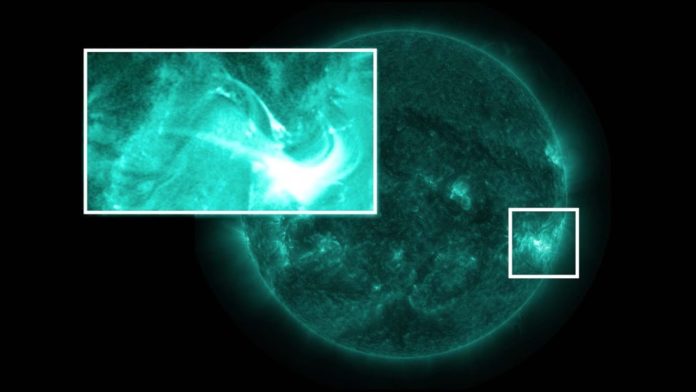In Sep 2014, Nasa scientists observed that a filament appeared to be the beginnings of a solar eruption. That filament actually consists of dense solar material that gains energy and force if it soared. But rather than erupting the sun, the filament dropped.
Since researchers had such a large number of instruments watching the occasion, they were able to discover the entire event from beginning to end. At that event, they explained for the first time, how the Sun’s magnetic landscape terminated a solar eruption.
Georgios Chintzoglou, lead author of the paper said, “Each component of our observations was very important. Remove one instrument, and you’re basically blind. In solar physics, you need to have good coverage observing multiple temperatures, if you have them all, you can tell a nice story.”
Scientists used data from NASA’s Solar Dynamics Observatory, NASA’s Interface Region Imaging Spectrograph, and JAXA/NASA’s Hinode. They also make use of several ground-based telescopes in support of the launch of the NASA-funded VAULT2.0 sounding rocket.
All these observatories observed the Sun in dozens of different wavelengths of light. Scientists found data on Sun’s surface and lower atmosphere that allows them to track the eruption from its onset up through the solar atmosphere.
As the day, the filament dropped the solar eruption, scientists pointed out the VAULT2.0-sounding rocket was collecting data from above Earth’s atmosphere for about five of those minutes at an active region of the sun. To focus on this observation, scientists then collaborated with IRIS. Later on, they used observation as an input for a model of the Sun’s magnetic environment.
Angelos Vourlidas, an astrophysicist at the Johns Hopkins University Applied Physics Laboratory in Laurel, Maryland said, “We were expecting an eruption; this was the most active region on the Sun that day. We saw the filament lifting with IRIS, but we didn’t see it erupt in SDO or in the coronagraphs. That’s how we knew it failed.”
An astrophysicist Antonia Savcheva said, “We computed the Sun’s magnetic environment by tracing millions of magnetic field lines and looking at how neighboring field lines connect and diverge. The amount of divergence gives us a measure of the topology.”
This topology shapes how solar structures evolve on the Sun’s surface. Generally, when solar structures collide with opposite magnetic orientations, they release magnetic energy by heating the atmosphere with a flair. They also erupt into space as a coronal mass ejection.
During that filament eruption, the model indicated the filament instead pushed up against a complex magnetic structure, shaped like two igloos smashed against each other. This results in a collision of two bipolar regions on the sun’s surface in the form of a hyperbolic flux tube.
Chintzoglou said, “The hyperbolic flux tube breaks the filament’s magnetic field lines and reconnects them with those of the ambient Sun so that the filament’s magnetic energy is stripped away.”
This structure consumes the filament like a log processor, splashing chips of sun-powered material and counteracting ejection. As the filament melted away, the model exhibits warmth and vitality were discharged into the sunlight-based air, coordinating the underlying perceptions. The re-enacted reconnection likewise underpins the perceptions of splendid flaring circles where the hyperbolic flux tube and fiber met— confirm for attractive reconnection.
While scientists have speculated such a process exists, it wasn’t until they serendipitously had multiple observations of such an event.
Vourlidas said, “This result would have been impossible without the coordination of NASA’s solar fleet in support of our rocket launch.”
“Most research has gone into how topology helps eruptions escape. But this tells us that apart from the eruption mechanism, we also need to consider what the nascent structure encounters in the beginning, and how it might be stopped.”
Journal Reference
- Georgios Chintzoglou, Angelos Vourlidas, Antonia Savcheva, Svetlin Tassev, Samuel Tun Beltran, and Guillermo Stenborg; Magnetic Flux Rope Shredding By a Hyperbolic Flux Tube: The Detrimental Effects of Magnetic Topology on Solar Eruptions. 2017 The Astrophysical Journal, Volume 843, Number 2. DOI: 10.3847/1538-4357/aa77b2
